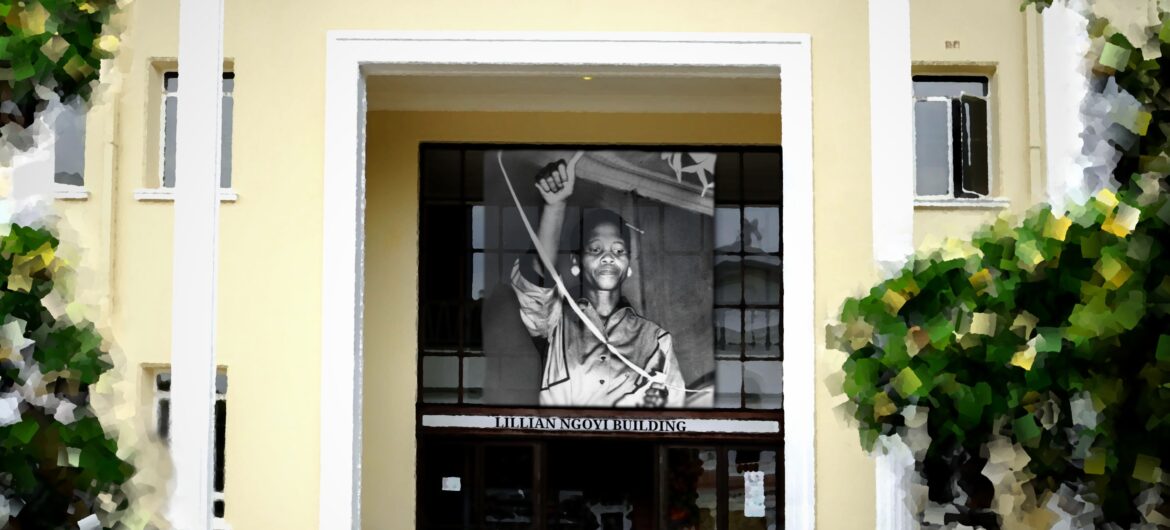SStellenbosch University has recently announced that the Wilcocks building will be renamed. To say that this decision has been a long time coming would be an egregious understatement, however, we welcome it with cautious enthusiasm. This brief document serves not only to motivate why we make this nomination but also as a tool to educate those who shall encounter it now and in the future, for it yields potential for monumental change.
We believe that it is aligned with the “The University’s commitment to adopting new visual symbols that allow for the inclusion of a variety of expressions, stories, identities and histories, as stated in The Stellenbosch University visual policy (draft) 2020, that the inclusion of a phenomenal black woman such as Mam Lillian Ngoyi is best suited. It does not take a renowned scholar or historian of Southern Africa to note that the erasure of women’s contribution to the liberation struggle, an erasure that has occurred in both the public and private sphere, is both distressing and traumatic. The individual, Lillian Ngoyi, whose name we have nominated is someone who is no stranger to distressing situations due to her involvement in the acclaimed Union Building anti-pass marches in the 1950’s whereby thousands of petitions, signed against the segregationist pass laws of the time, were carried in one hand by Lilian Ngoyi. Her tenacity, courage and boldness ensured that she handed these petitions over to Prime Minister Strijdom by knocking at his door herself. This trailblazer was born into the merciless hand of a racist government and rose in ranks by waging war against it, both diplomatically and strategically. Not only was she exemplary in all her work, she was a talented speaker whose talents soared as she served as the first president of the ANC Women’s League and later as the first woman elected onto the ANC national executive committee. Despite the multiple repression attempts from the racist government, she remained a fierce voice for change. Suffice to say, to find the standard as far as exceptional activism is concerned, look no further than Ma Lillian Ngoyi. This is a name which also brought courage and intellectual stimulation for student activists here at Stellenbosch University because at the height of student protests for decolonization, access and representation it was this name that the RW Wilcocks building became renamed as. This was a decision made because student activists felt it necessary to recognise, symbolize and actualize the contributions of black women in the fight for liberation which still continues today for women across the country.
As mentioned above, to not rename a building after a woman so phenomenal would be subconsciously contributing towards a traumatic erasure because in an institution such as Stellenbosch University, where multitudes of women more especially black have often felt underrepresented and unseen, such erasure is familiarity. We seek that you address this through not only the renaming of the building yet also through provision of a short information series where women can see and feel that they too have roots and belonging in the institution. Furthermore we firmly believe that by Stellenbosch University taking the decision to honour Mam Lillian Ngoyi in such a manner will pave the way for those in the public and private sphere to do the much necessary work of a symbolic and active commemoration.
By Charli Kasumba and Nomzamo Ntombela
